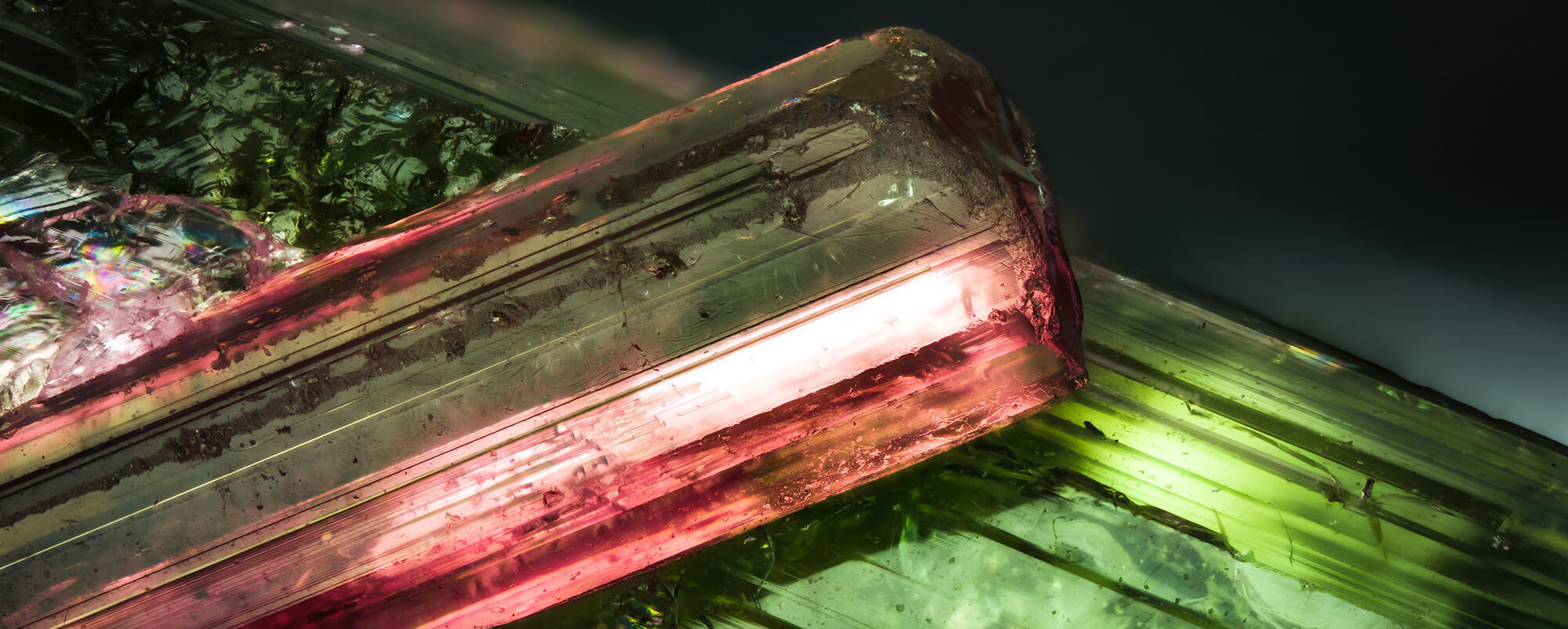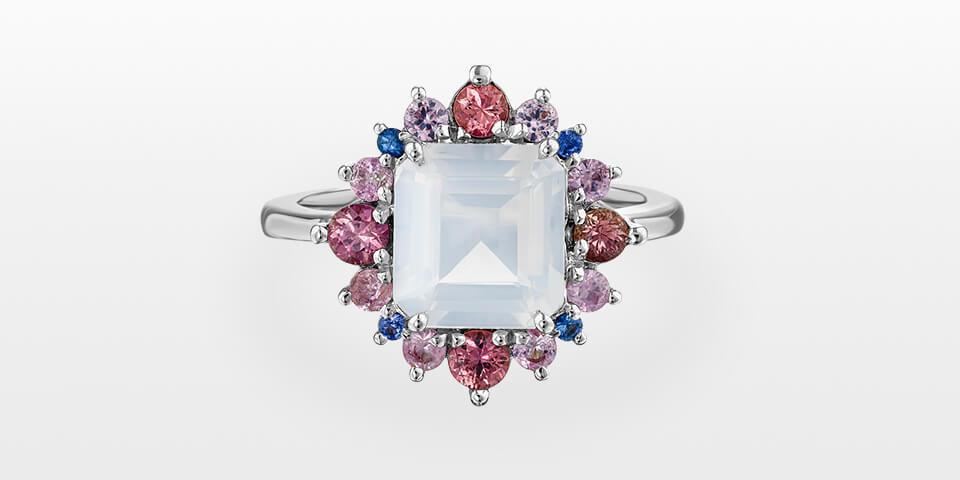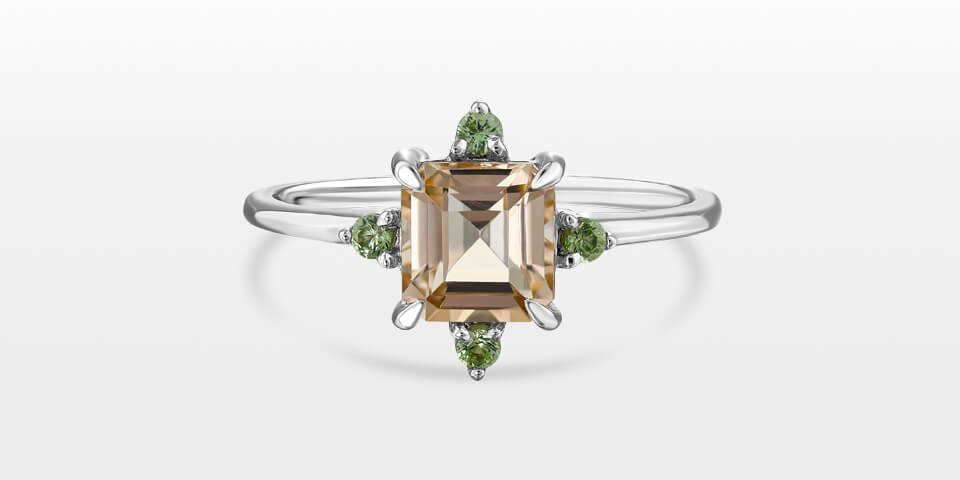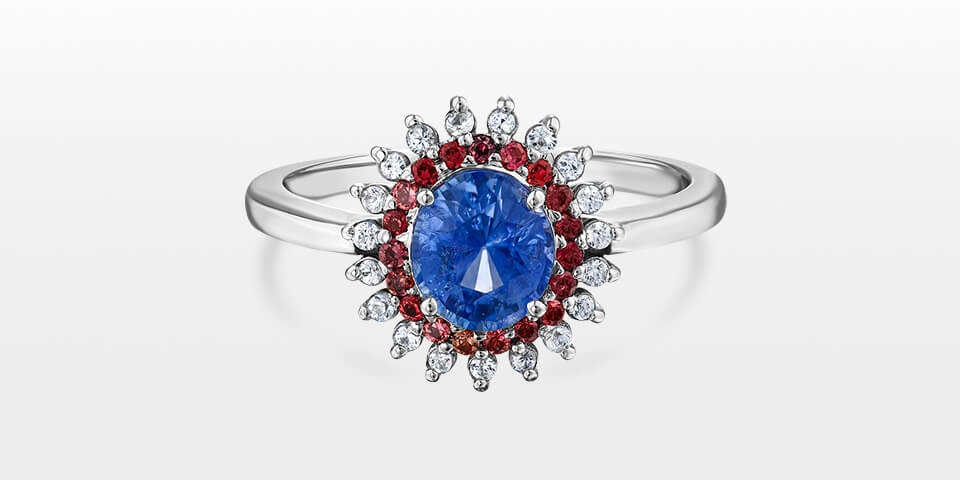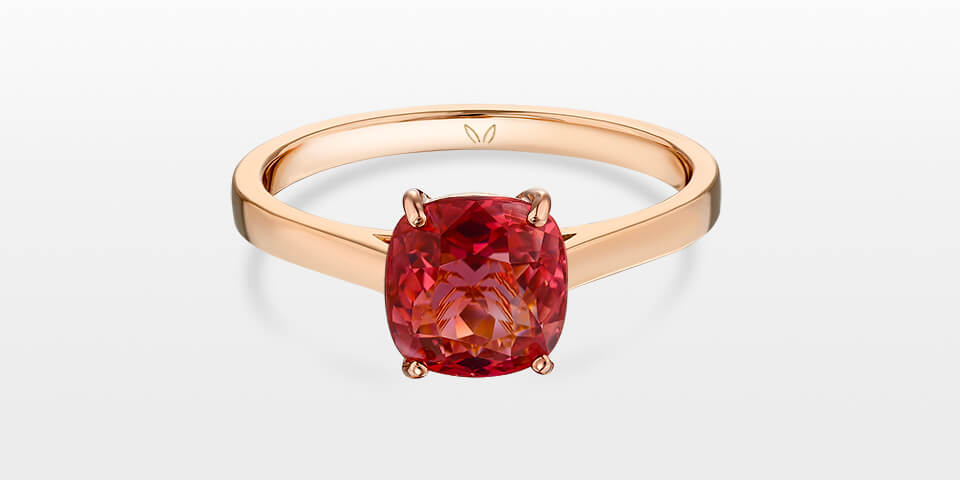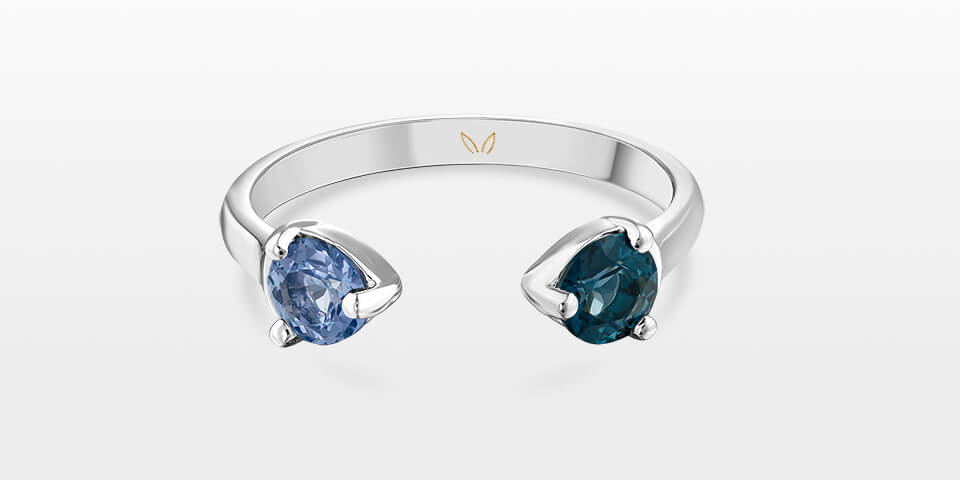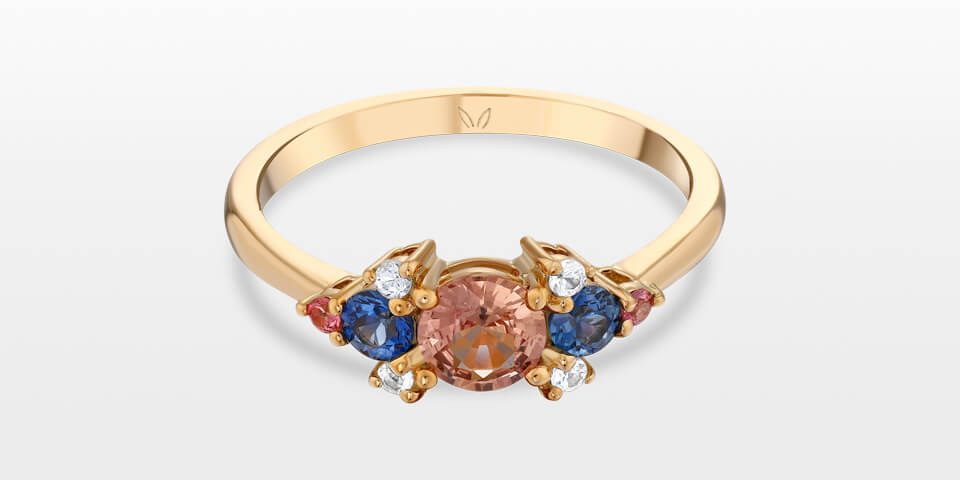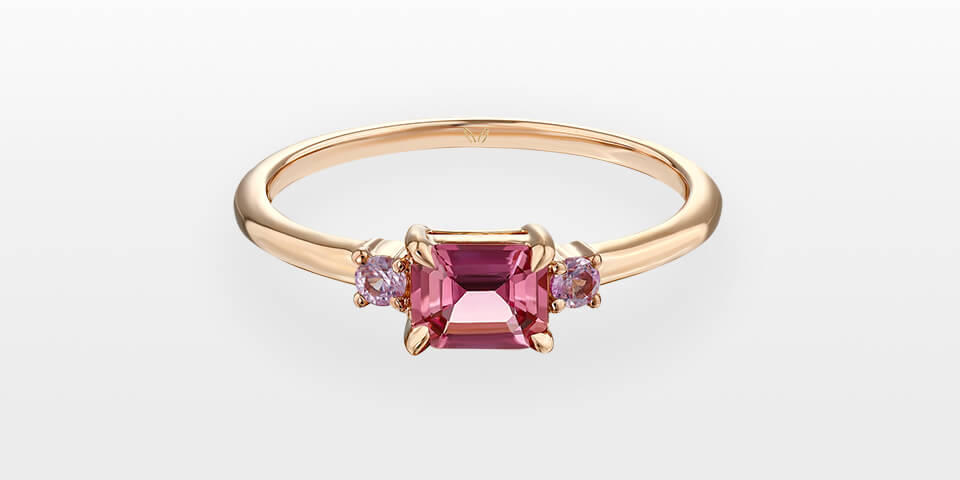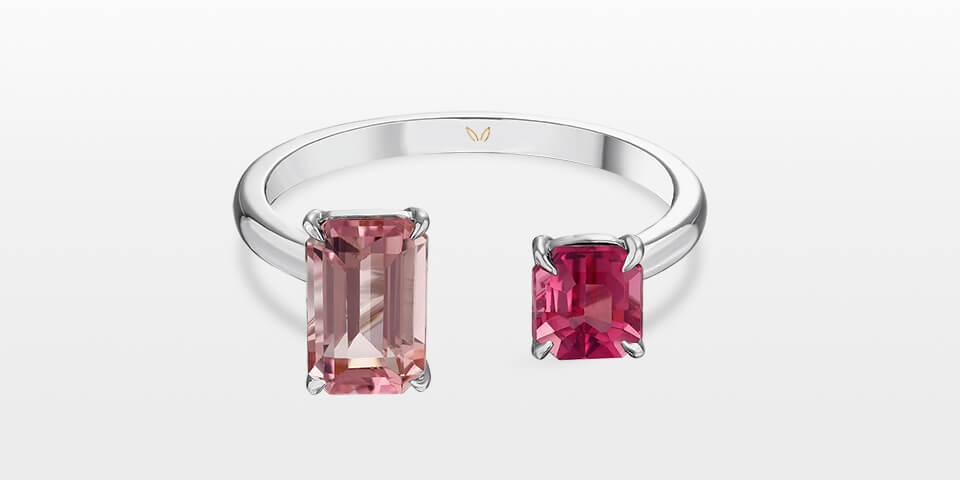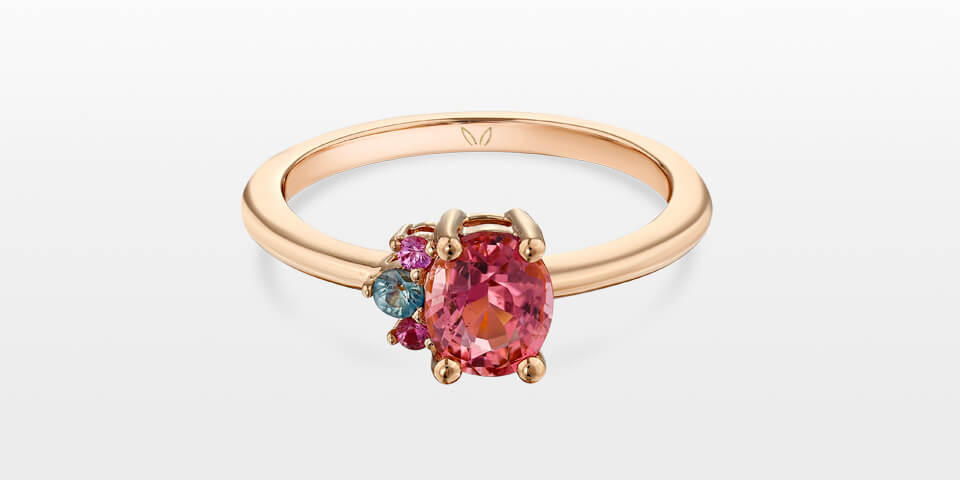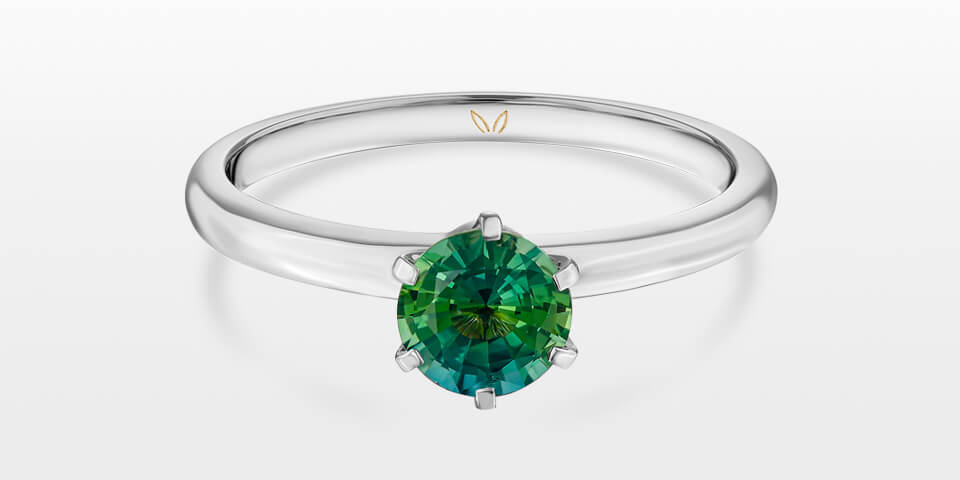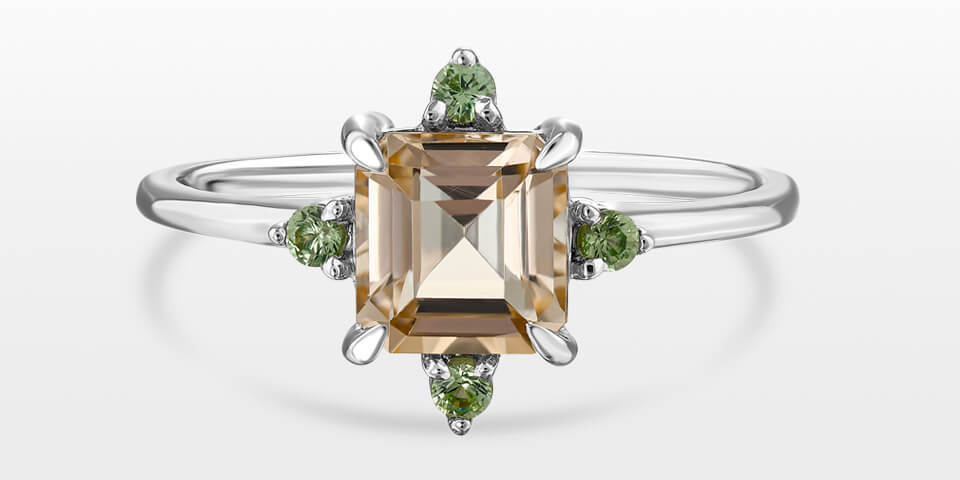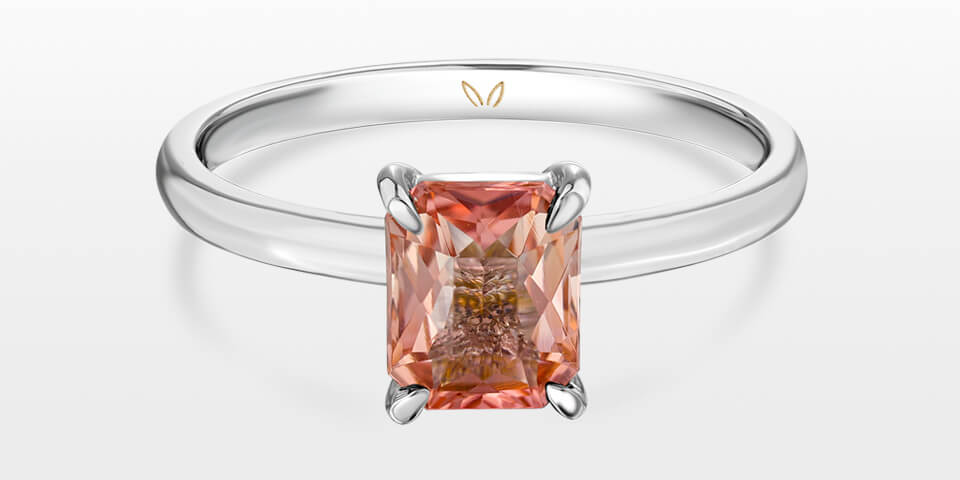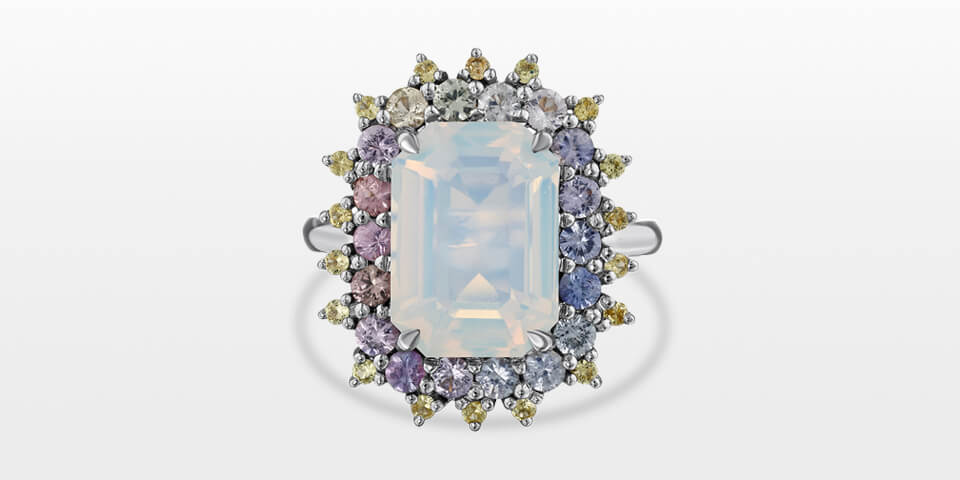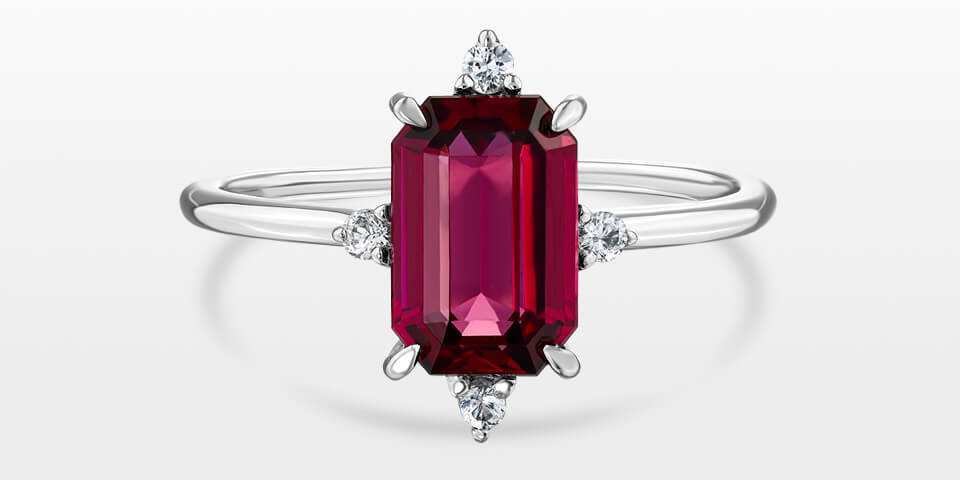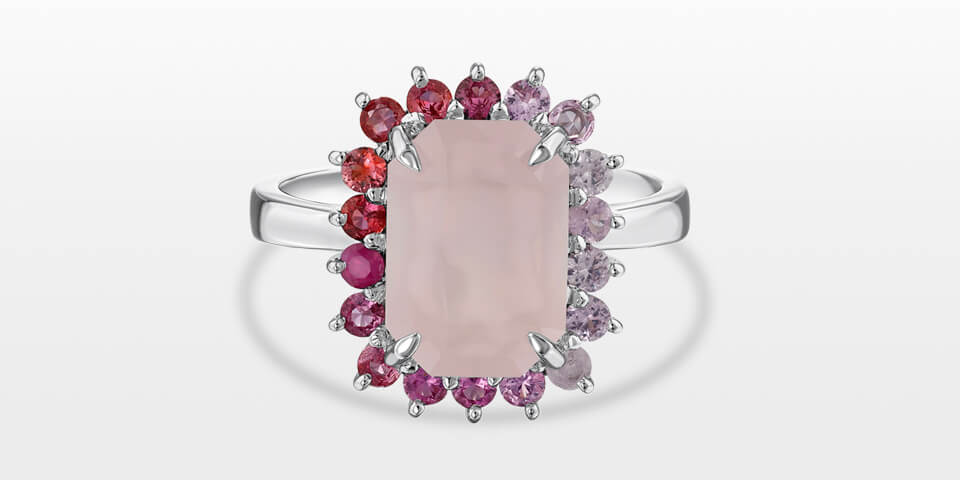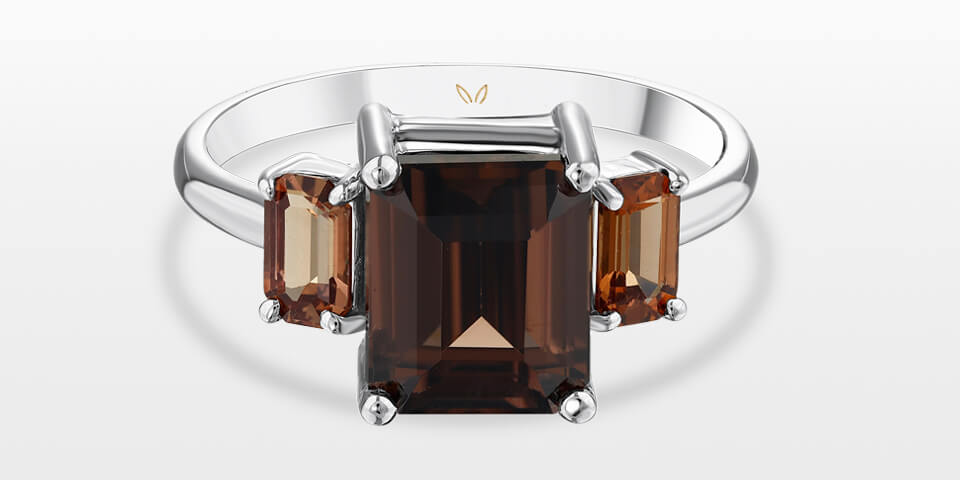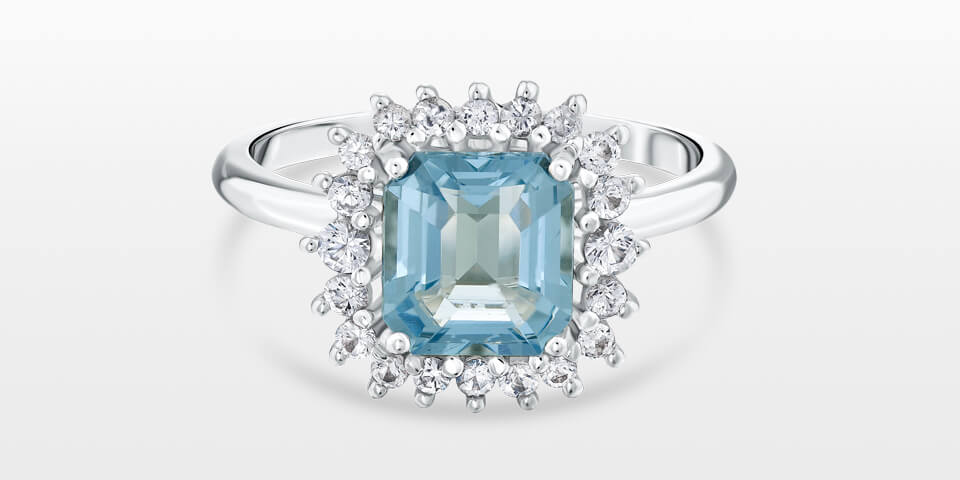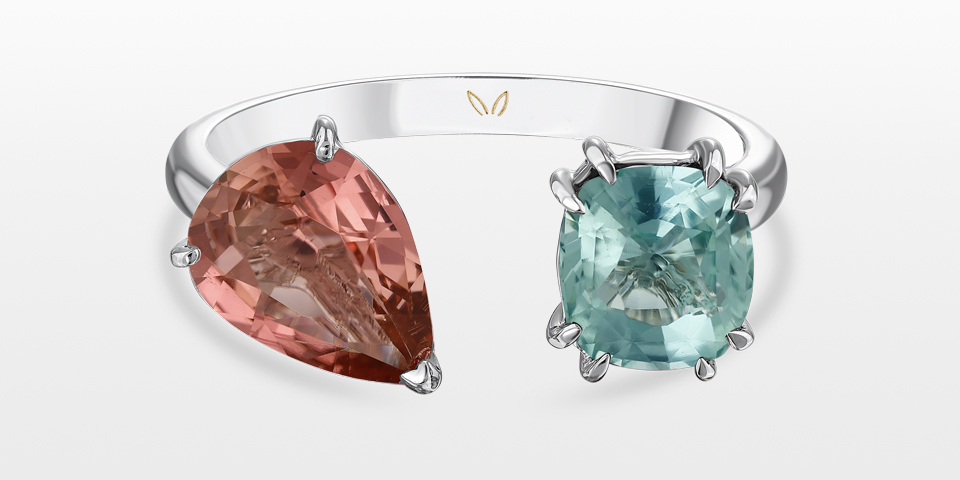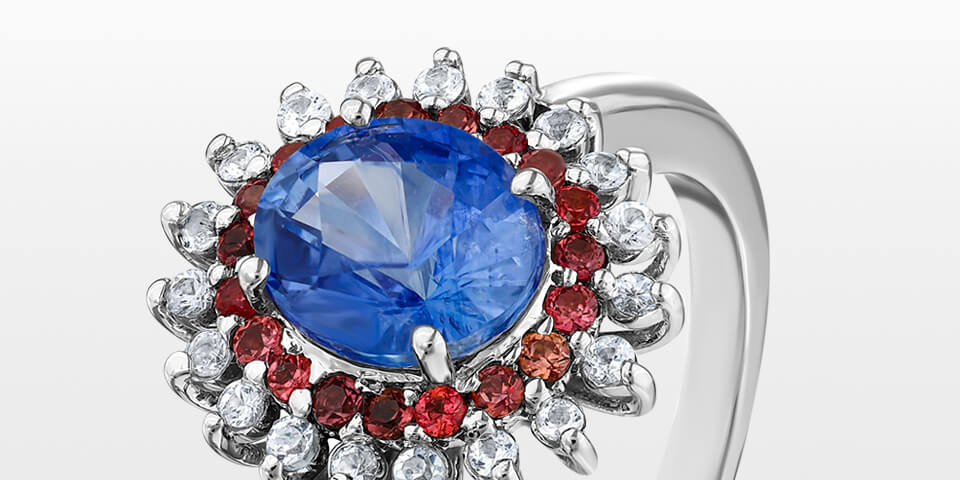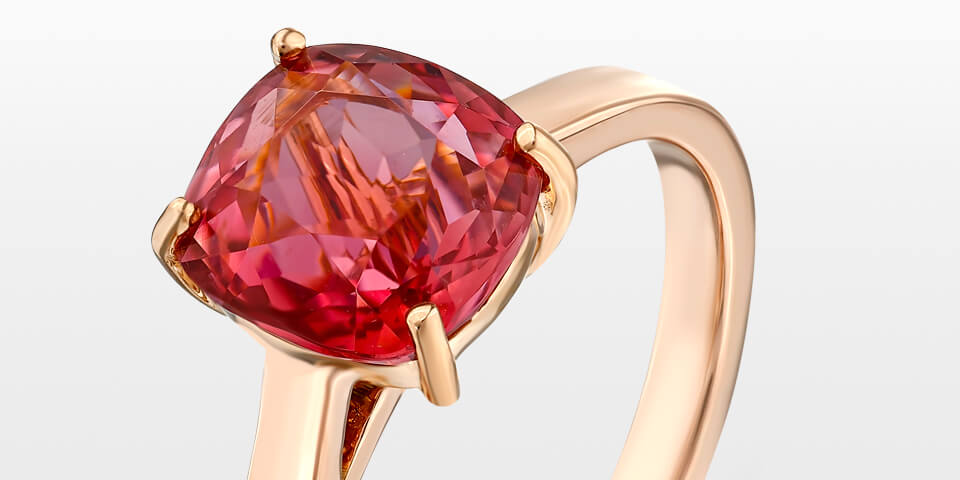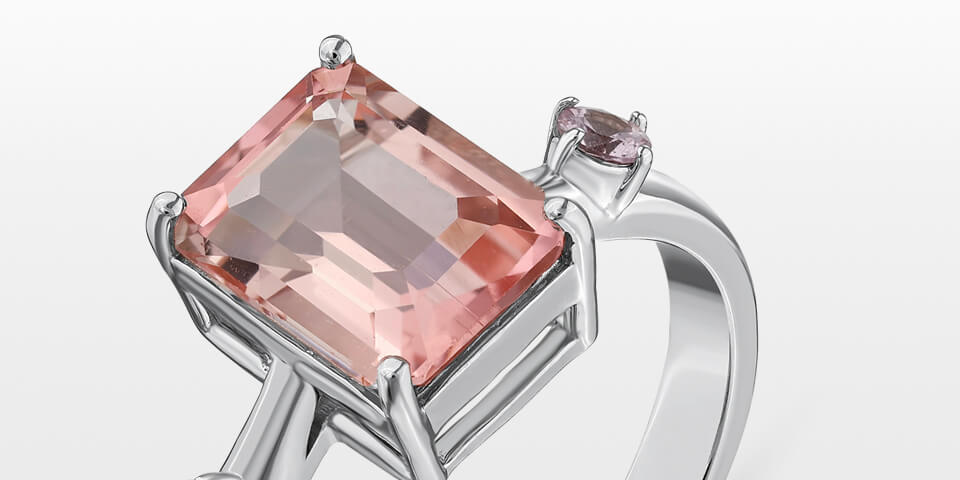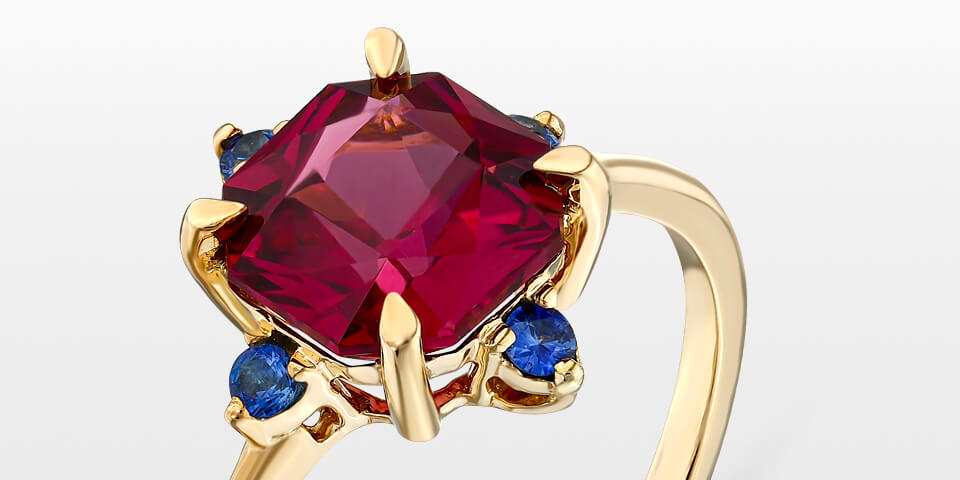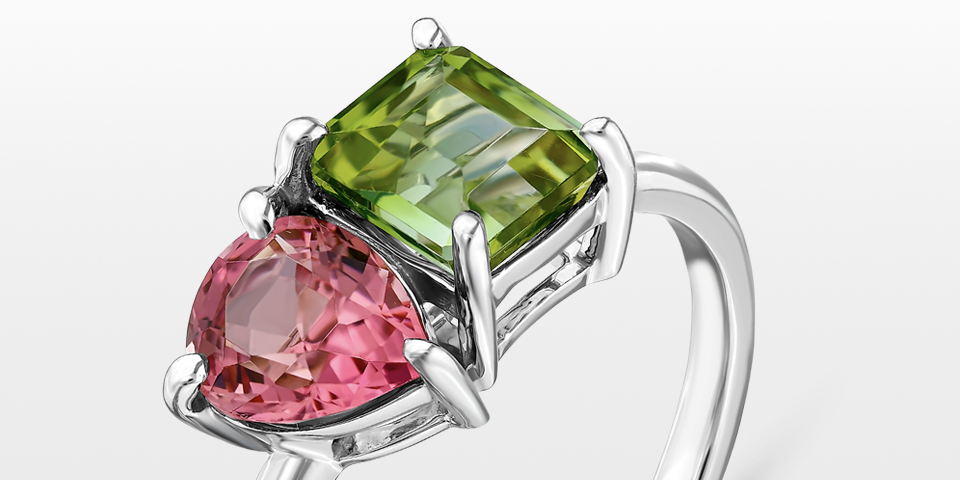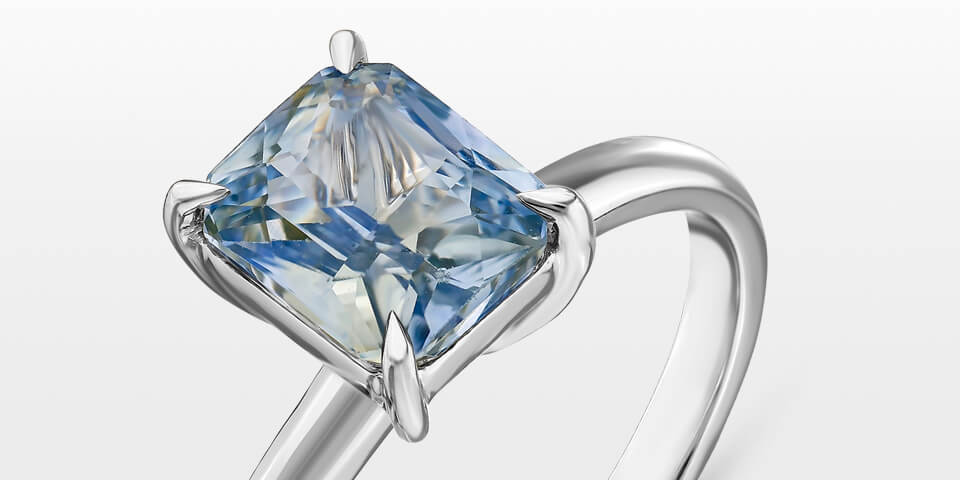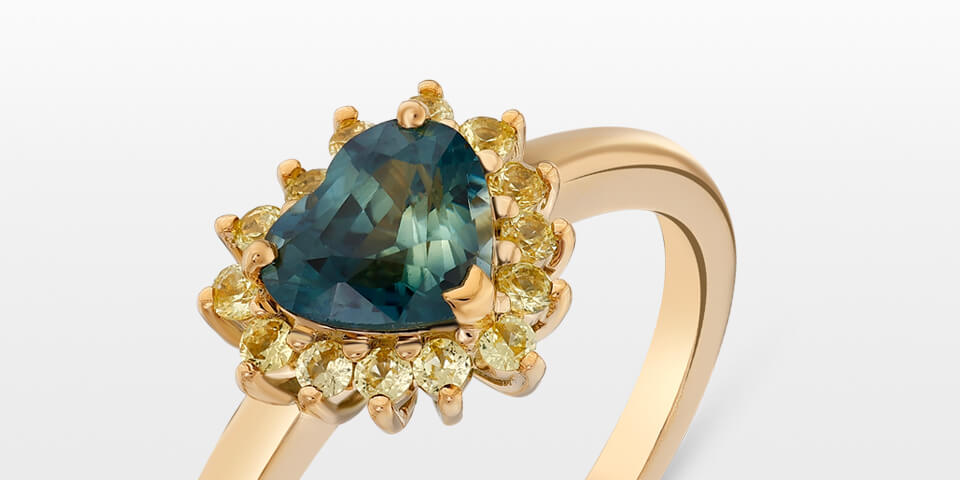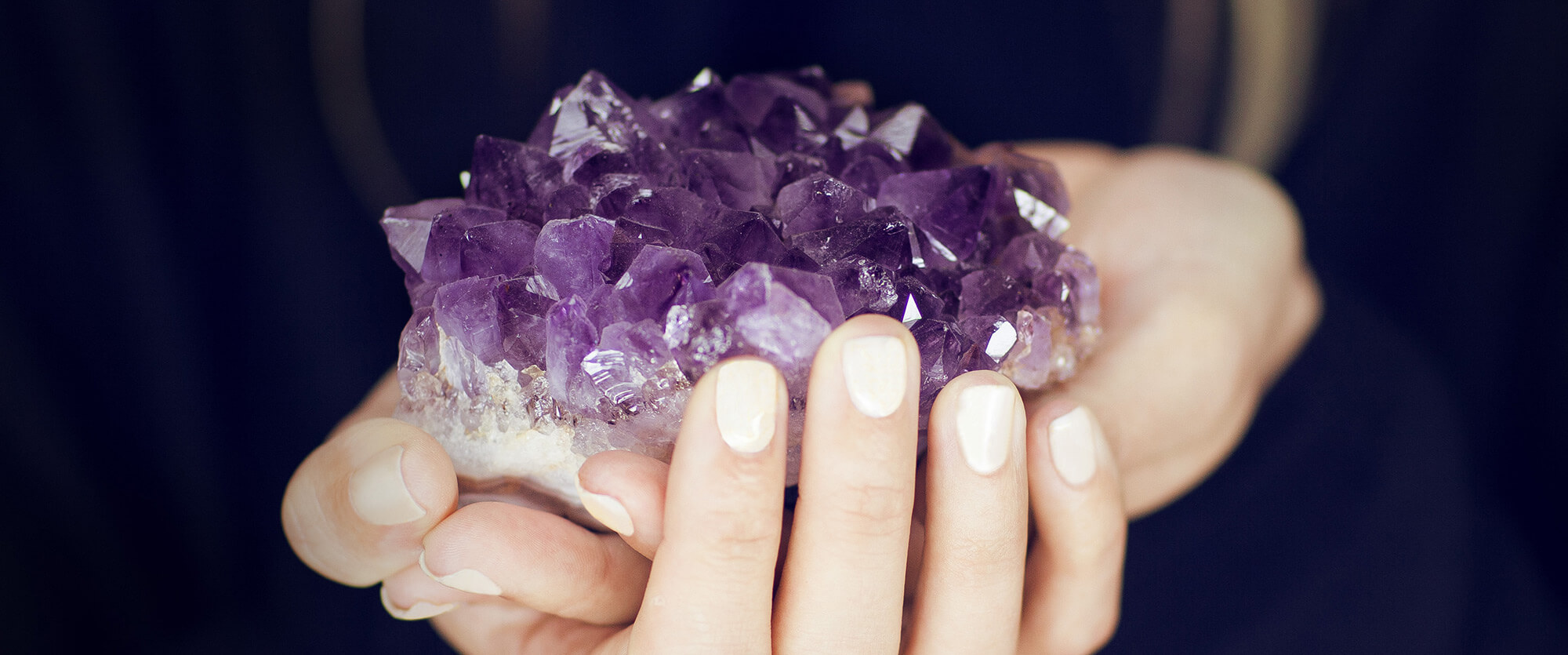
Idiochromatic gems
Idiochromatic gems are sometimes referred to as "self-colored," because their color is a natural result of their chemical makeup. The color of peridot, an iron magnesium silicate, is green because of the iron it contains, while rhodochrosite is a manganese carbonate with an unnaturally pink to red hue.
Particoloring
Particolored gemstones are ones that contain various colors within the same stone. Bicolored and tricolored gems have two or three colors, respectively. Rarely do we see twelve or more colors. There may be a sharp or gradual separation between the colors.
Allochromatic gems
Trace elements in the gem's structure give them their color, making them an allochromatic gem. These include, for instance, amethyst and ruby. Unlike ruby, which is corundum colored by traces of chromium, amethyst is colorless quartz that has been given a purple tint by traces of iron.
Pleochroic gems
Colors absorb white light differently in different directions as it travels through a gemstone. As a result, a stone can appear to be a different color when viewed from various angles. Pleochroism is the name of this phenomenon, which can help identify cut stones in a significant way.
